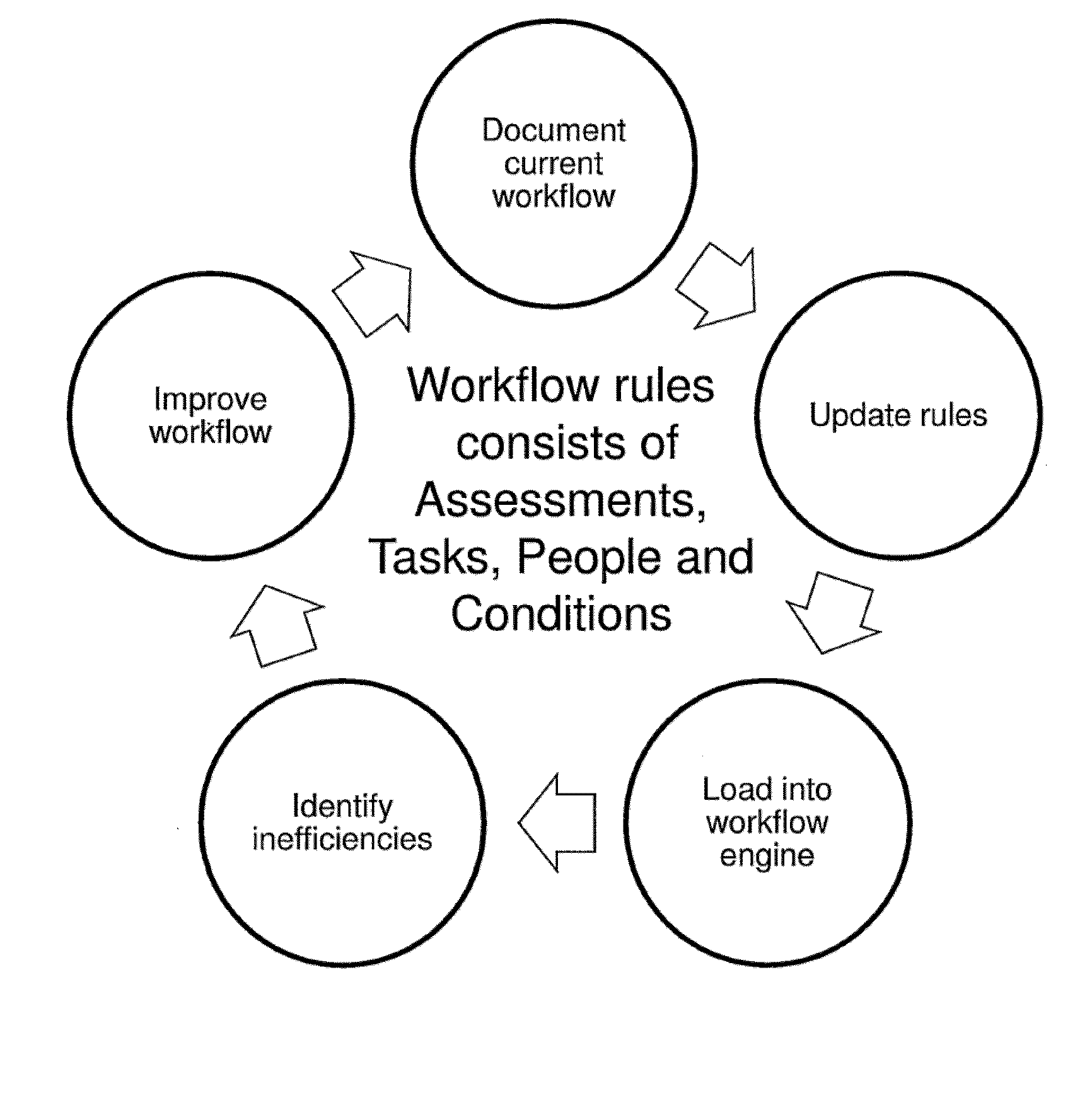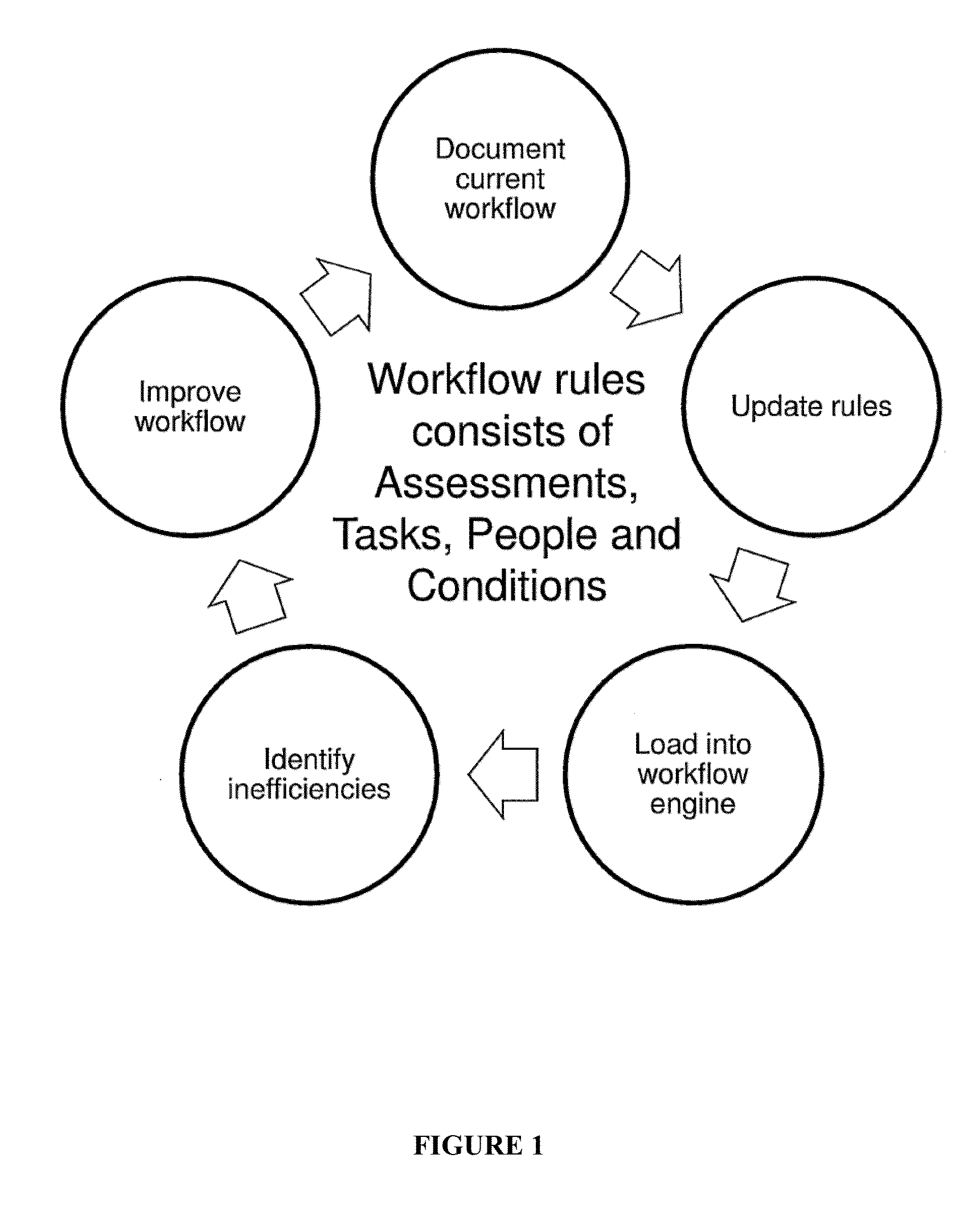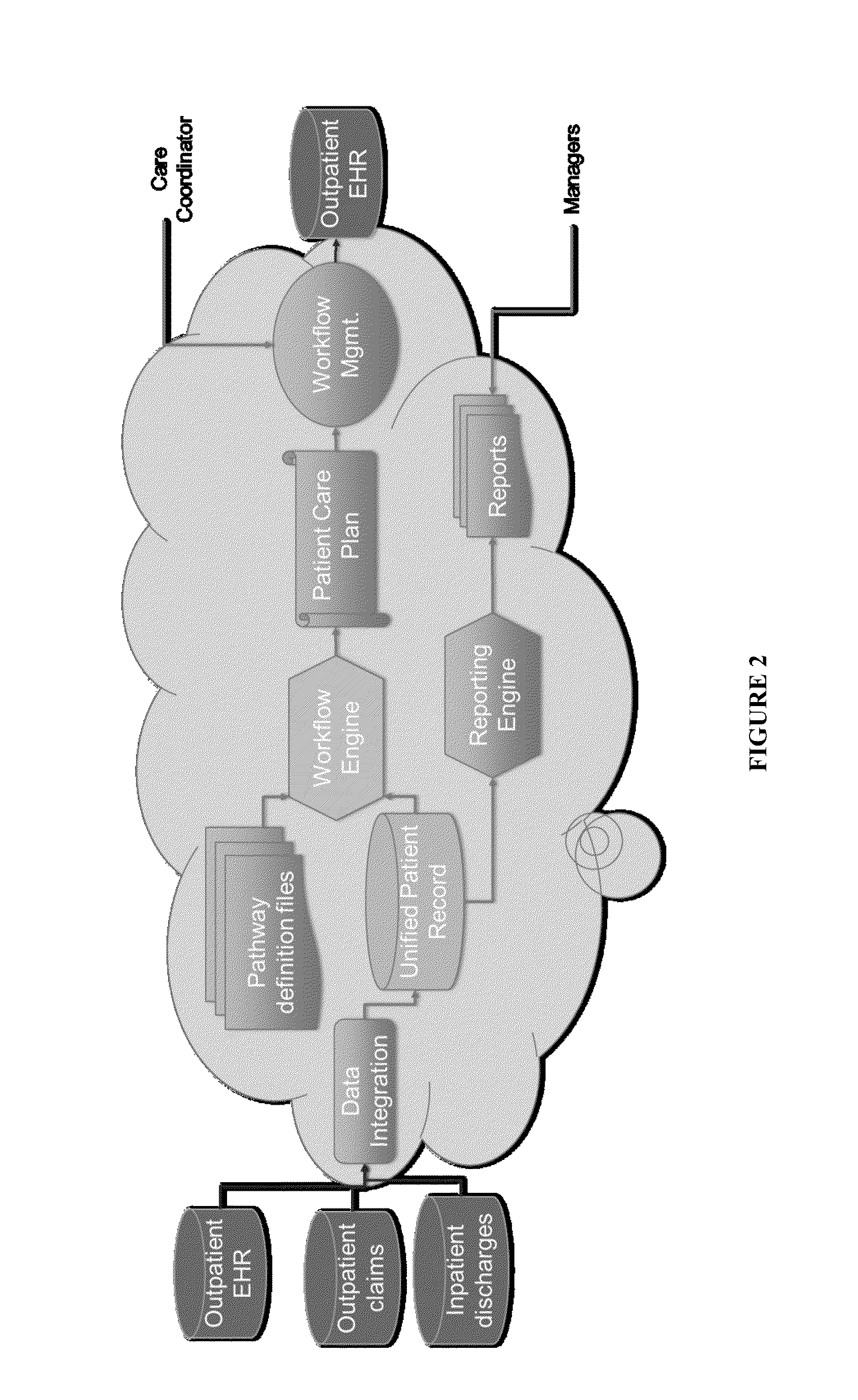Systems and Methods for Establishing and Updating Clinical Care Pathways
a clinical care and system technology, applied in mental therapies, instruments, ict adaptation, etc., can solve the problems of insufficient support for the medical team managing patients, insufficient patient management support, and insufficient data collection and storage,
- Summary
- Abstract
- Description
- Claims
- Application Information
AI Technical Summary
Benefits of technology
Problems solved by technology
Method used
Image
Examples
example 1
Output of a Gap in Care Analysis
[0100]FIG. 5 displays a potential output of the system when applying a gap-in-care analysis. The left side of the bottom panel is a codified patient list. The subsequent columns show different facets of a subject's record that can be analyzed by the system. The boxes indicate a lack of completion of the specified tasks, while the dots represent completion of the tasks. In the top panel, the dark bar indicates the percentage of patients who have not completed a task, while the lighter bar indicates the percentage of patients who have completed a task. For example, none of the patients have had education on blood glucose; thus, the corresponding box in the top panel shows a dark 100% bar indicating that all of the analyzed patients require education on blood glucose. Conversely, all of the analyzed patients have completed an evaluation appointment with a primary care provider, thus the corresponding box in the top panel shows a light 100% bar indicating...
example 2
Workflow of a Subject with Congestive Heart Failure (CHF)
[0101]FIG. 6 depicts a potential workflow of a system of the invention for a subject with CHF. In this example, the subject's data were collected from various sources, including an EMR, a record in the system, and behavioral data about the subject. The data were then input into the analytics engine to create a subject-specific care protocol. In this case, the behavioral risk level of the patient was high due to a lack of treatment compliance and lack of a social support system. The clinical risk level of the subject was determined to be medium due to lack of a specific therapy shown to be effective for CHF, a high blood pressure, and obesity. Based upon these drivers of risk, the system generated a care protocol for the subject. To address the clinical risks, the care protocol comprised recommending to a care coordinator that the subject be enrolled in a weight loss program to address the subject's obesity. Additionally, the c...
example 3
Gaps-in-Care Analysis
[0102]A subject with hypertension is enrolled into a system of the invention at a healthcare institution. Upon enrollment, a care coordinator uses the system to access an electronic health record of the subject to determine which interventions have been recommended to the subject for treatment of hypertension prior to enrollment in the system. The system then compares the recommended interventions to the interventions suggested by the system for treatment of hypertension. The system determines that while the subject has been prescribed a thiazide diuretic, a follow-up appointment to check electrolyte levels has not been scheduled. The system can then display a result of this analysis to the care coordinator and the care coordinator can take the necessary steps to resolve this gap in care.
PUM
 Login to View More
Login to View More Abstract
Description
Claims
Application Information
 Login to View More
Login to View More - R&D
- Intellectual Property
- Life Sciences
- Materials
- Tech Scout
- Unparalleled Data Quality
- Higher Quality Content
- 60% Fewer Hallucinations
Browse by: Latest US Patents, China's latest patents, Technical Efficacy Thesaurus, Application Domain, Technology Topic, Popular Technical Reports.
© 2025 PatSnap. All rights reserved.Legal|Privacy policy|Modern Slavery Act Transparency Statement|Sitemap|About US| Contact US: help@patsnap.com



